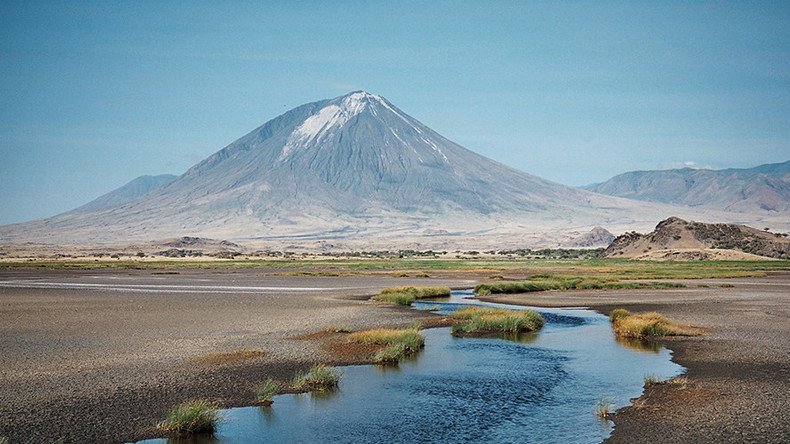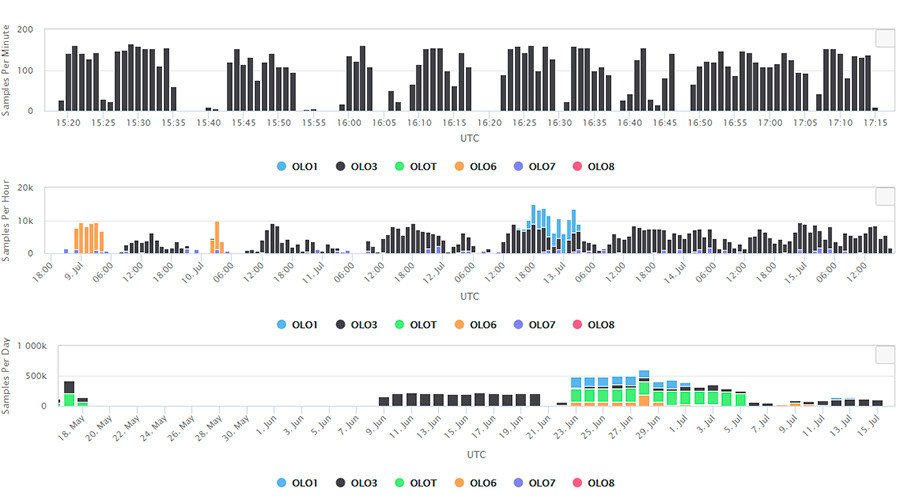‘Mountain of God’: Volcano eruption is ‘imminent’, observers warn

Scientists monitoring an active volcano in northeastern Tanzania have warned that it could erupt at any moment, sparking fears for the some of the world’s oldest anthropological sites.
The peak, known to the Maasai tribe as the ‘Mountain of God,’ is less than 70 miles from Olduvai Gorge where human footprints dating back 4 million years have been discovered. Meanwhile, Engare Sero, the site of 400 footprints dating back 19,000 years, is just nine miles away from the volcano on the shores of Lake Natron.
#Alaska volcano ash ‘belch’ captured by weather satellite (PHOTOS) https://t.co/aZGycnKFDspic.twitter.com/g6iqLXdTBA
— RT (@RT_com) May 30, 2017
Tanzanian, Korean, and US researchers, who have been keeping an eye on the volcano for more than a year, say they expect an eruption ‘imminently.’

“Imminent in our case means in one second, in a few weeks, a couple of months, or a year or more,” Dr. Sarah Stamps, a geophysicist at Virginia Tech who is involved in the volcano monitoring project, told National Geographic.
“There are increased ash emissions, earthquakes, uplift at small volcanic cones, and an ever-widening crack at the top of the volcano on the west side. These are all signs of volcanic deformation that will likely lead to an eruption sooner rather than later.”
Follow @geojones_vt as he and @dsarahstamps travel to #Tanzania to study volcano/African rift. #vtabroad Story: https://t.co/h94G1mDwQe
— VT Science (@VT_Science) June 5, 2016
The 7,650ft peak, also known as Ol Doinyo Lengai, is unique in being the only volcano that belches out lava containing carbonatite, a type of rock that thins the lava and increases the rate of flow. A large eruption from the volcano could threaten the anthropological sites nearby.
The volcano last erupted in 2014, with lava flowing from its cone in March and July of that year. Researchers also cataloged signs of a large crack developing along the outer rim.
Italian mafia expert blames 'criminal organizations' for setting Mount #Vesuvius on fire https://t.co/1IVQGOvtHO
— RT (@RT_com) July 14, 2017
The Olduvai Gorge footprints are thought to have belonged to a group of early humans who lived 3.6 million years ago. The impressions were made when five of our ancient relatives walked across wet volcanic ash.
READ MORE: King of the swingers? Prehistoric man had multiple partners, new study finds
Engare Sero was preserved in much the same way. Known as ‘dance hall’ because of the number of prints found in the dirt, no other site in Africa has as many homo sapiens footprints.












